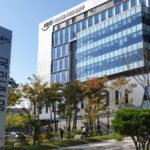The lil AIBLE, KT&G’s heat-not-burn cigarette device (File photo, courtesy of Yonhap)
KT&G Corp., the world’s fifth-largest tobacco maker, is facing a $2 billion damages suit from a former employee who claimed the South Korean company did not properly reward him for inventing the world’s first heat-not-burn cigarette.
Kwak Dae-geun, a former KT&G researcher, filed a civil suit with a district court in Daejeon where the company has headquarters, seeking 2.8 trillion won ($2 billion) in compensation for his invention, according to legal sources on Wednesday. The compensation is the largest such demand by an individual in a legal action, excluding collective suits.
“The total amount of revenue earned and expected to be earned by KT&G through Kwak’s inventions, along with the losses incurred by the company due to the absence of overseas patents, was estimated to be 84.9 trillion won,” said Jaeyou Lawfirm, representing the plaintiff. “Of the total, Kwak demands 2.8 trillion won as his compensation.”
KT&G vowed to actively respond to the suit, saying the company already rewarded him.
“The company paid proper compensation for invention through a technology advisor deal and Kwak accepted it and agreed not to raise further issues,” a KT&G official.
“The patents are not plied to current products. We will take legal action if a retiree, who has already received compensation, continues to make unfair claims.”
PROTOTYPE
Kwak, who started working for KT&G in 1991, developed a prototype of heat-not-burn cigarette products in 2005. He applied for his first patent for the non-combustible tobacco device in July of the year and another patent for an upgraded product with an automatically controlled heater in December 2006.
He applied for a patent for a tobacco stick in June 2007, completing a heat-not-burn cigarette product set consisting of a heating unit, another device and a stick.
The researcher reportedly left KT&G in 2010 as a part of the tobacco maker’s restructuring after it refused his proposal for further developments.
Kwak Dae-geun, a former KT&G researcher, speaks to the press on April 24, 2024, at the Jaeyou Lawfirm office in Daejeon, South Korea (Courtesy of Yonhap)
Kwak’s requested compensation reflected estimates of the sales KT&G was expected to earn through his patented technology during the 20-year patent term, what the company would have earned if it had registered patents overseas and the revenue foreign competitors made due to KT&G’s inaction on their patent infringements.
By Yong-Hoon Kwon
fact@hankyung.com
Jongwoo Cheon edited this article.















